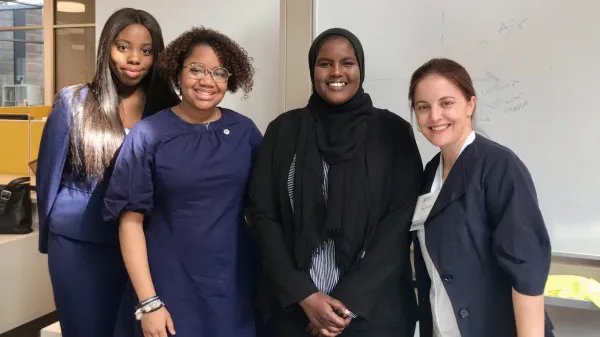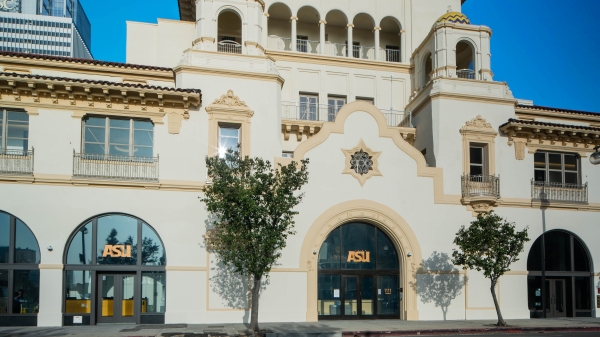Fighting fake photos, one social stream at a time
ASU teams up with tech company to fight fake news ahead of midterm elections

In 1855, an English photographer named Roger Fenton traveled to Crimea to document the war there. British troops dubbed one spot on the Sevastopol peninsula the “valley of death” because it was under constant shelling.
Fenton photographed the spot, a shallow defile littered with cannonballs. The photo (above), titled “Valley of the Shadow of Death,” became famous as one of the first and most well-known images of war.
The problem is it’s faked. Another photo without cannonballs in the image exists. Filmmaker Errol Morris exhaustively researched both images and came to the conclusion Fenton and his assistant tossed cannonballs along the valley so it made a better picture.
Flash forward to now, when most of the images coming out of Syria were taken not by journalists but individuals. Was the hospital bombed yesterday, as the rebels say, or not, as the regime claims?
How can you tell if you see it in your news feed? A new technology aims to answer that.
Truepic is a tech company focused on image authenticity. The company is launching a first-of-its-kind partnership with Arizona State University's Weaponized Narrative Initiative to push back on disinformation with authenticated images and videos throughout the country ahead of the midterm elections.
When photos are loaded into the Truepic app, their patented technology verifies that the image hasn’t been altered or edited and watermarks it with a time stamp, geocode and other metadata. Truepic stores a version of the photo in its digital vault and assigns it a six-digit code and URL for retrieving it. Truepic also immediately logs the image or video onto the Bitcoin blockchain.
“It will allow you to know whether or not an image you’ve received is valid,” said Braden Allenby, founding co-director of the Weaponized Narrative Initiative. “The reason that’s important is that a lot of disinformation swirls around Ukraine, Syria, areas where combat makes it very difficult for the average person to know what’s real and what’s not.”
As soon as something like a hospital bombing or a chemical attack happens, an immediate swell of disinformation flows out, primarily from Russian sources, Allenby said.
“You have this mass of information — conflictual, difficult and complex — that most people don’t understand,” he said. “If you have this technology, what you can do is you can go to the image itself and find out if it’s valid, if it’s taken at the place it was purported to be taken and at the time it was purported to be taken.”
News operations also can verify the validity of photographs.
“We’re not very far from a time when CGI and voice technology is going to make it possible to have anybody saying anything and nobody except an expert with a lab full of equipment is going to be able to know whether it’s true or false,” Allenby said. “It means you have no way of verifying that what you want to think is true. This technology becomes more important going forward than it is now.”
Both ASU and Truepic are members of the State Department's Global Engagement Center, which is charged with leading the federal government's efforts to counter disinformation.
“It’s not going to be a tech fix, and it’s not going to be an academia fix,” said Mounir Ibrahim, leader of strategic initiatives for Truepic.
Going forward, verification and trust will take something more than an app or a study, Ibrahim said. It will require information consumers to be an active part of the solution.
Top photo: "Valley of the Shadow of Death," Roger Fenton, Crimea, 1855. The famous image came under scrutiny in 2007 when an identical photo was found, one that did not feature the cannonballs on the road. Some have speculated that the additional cannonballs were added to increase the impact of the photo.
More Law, journalism and politics

School of Politics and Global Studies director's new book explores mass violence
Why do people commit atrocities and why are certain groups, including religious and ethnic, more vulnerable to large-scale violence? These questions are explored in a new book by Güneş Murat Tezcür…

ASU faculty contributing to improvement of Wikipedia
Many academics have a love-hate relationship with Wikipedia. While the website has information about almost anything you can imagine, the credibility of that information is sometimes suspect. Tracy…

ASU Law students gain vital experience through Los Angeles location
Students at the Sandra Day O’Connor College of Law at Arizona State University may be concentrated in the school’s downtown Phoenix headquarters, but they have more choices than ever when it comes to…